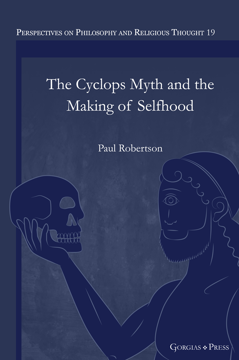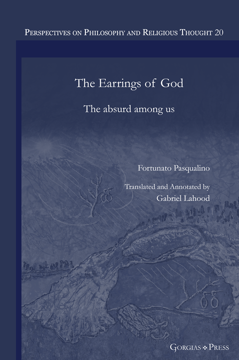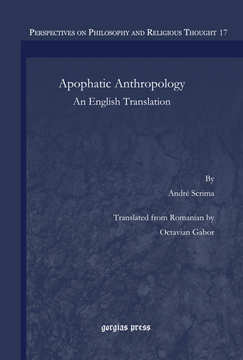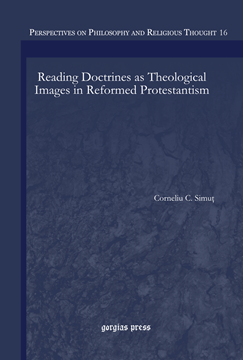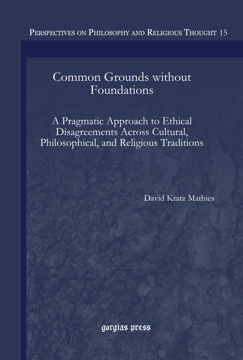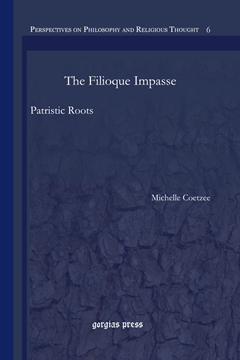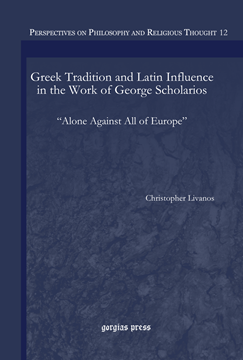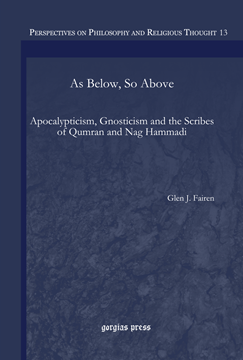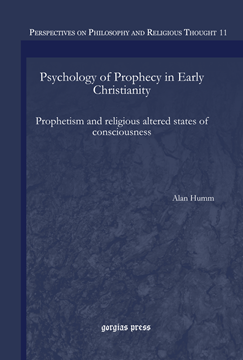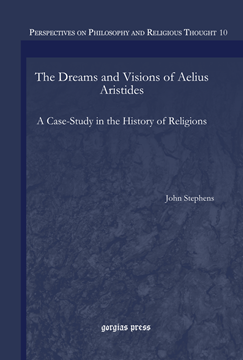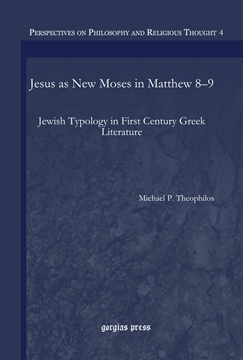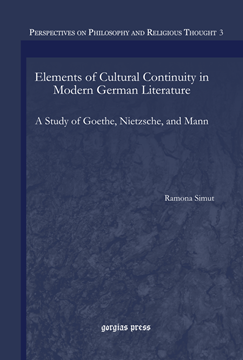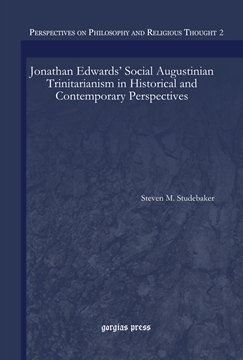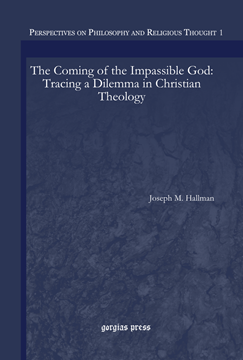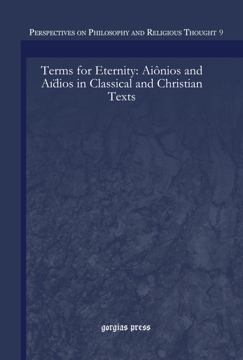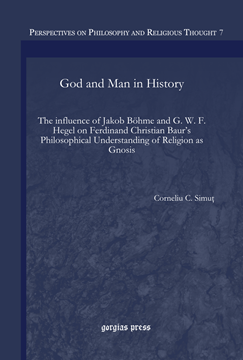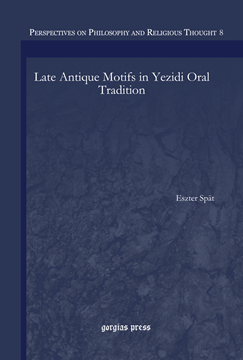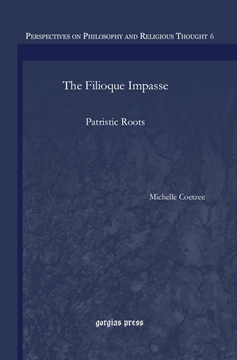Perspectives on Philosophy and Religious Thought
Perspectives on Philosophy and Religious Thought (formerly Gorgias Studies in Philosophy and Theology) provides a forum for original scholarship on theological and philosophical issues, promoting dialogue between the wide-ranging fields of religious and logical thought. This series includes studies on both the interaction between different theistic or philosophical traditions and their development in historical perspective.
The Essence of Greek Education since Antiquity
Plato, Photios the Great and Nicodemos the Athonite
ISBN: 978-1-4632-4453-8
This book attempts to answer the question: what are the essential features of Greek education? In so doing, it explores the extent to which the educational ideals and practices of paideia have displayed continuity from classical Athens until modern times. The views of Plato, Photios the Great (9th century) and Nicodemos the Athonite (18th century) are examined in particular, revealing significant stages of development. The book offers a presentation of what paideia holds up to be its own goal on its own terms. The proponents of the paideia tradition sought an answer to the age-old question, ‘What constitutes the human person?’ The response to that enigma determined everything else. Education took shape accordingly and led to a lifelong process of harmonising the respective functions of the soul and body. On account of its value on both a personal and communal level, paideia is of paramount significance for Plato and other exponents, such as Nicodemos. Their individual legacies stand like bookends on either side of some 22 centuries of Greek education that are appraised within these pages.
$114.95 (USD) $68.97 (USD)
The Cyclops Myth and the Making of Selfhood
ISBN: 978-1-4632-4348-7
This book explores the myth of the Cyclops across western history, and how its changing form from ancient Greece until the modern day reveals fundamental changes in each era’s elite understandings and depictions of cultural values. From Homer’s Odyssey to Hellenistic poetry, from Roman epic to early medieval manuscript glosses, and from early modern opera to current pop culture, the myth of the Cyclops persists in changing forms. This myth’s distinct forms in each historical era reflect and distill wider changes occurring in the spheres of politics, philosophy, aesthetics, and social values, and as a story that persists continually across three millennia it provides a unique lens for cross-historical comparison across western thought.
$114.95 (USD) $68.97 (USD)
The Earrings of God
The absurd among us
By Fortunato Pasqualino; Translated and Annotated by Gabriel Lahood
ISBN: 978-1-4632-4359-3
Life is full of absurdities, and human misperception of such absurdities leads to a state of unrest and fear that require meaning and direction for a happy life. F. Pasqualino addresses here samples of existential absurdities, and discusses solutions offered: Taoism offers in its paradoxes a natural self-help resource. Buddhism offers a natural wisdom that is informed by a supernatural impersonal Absolute. Hinduism offers a plethora of personal gods who embody the impersonal Absolute. The Judeo-Christian-Islamic wisdom teaches a personal Absolute God whose being is distinct from, but involved with human and non-human beings. The unifying feature of these wisdoms is: Obedience to, and love of, the Absolute can rectify human misperception of life’s absurdities, dissipate fear, and provide meaning, value and a serene life. Jesus Christ, the incarnate Absolute in Christian theology, chose to become an exemplar innocent victim for love, thus giving the most absurd but victoriously redeeming love that provides a new and sublime perspective on life’s absurdities. G. Lahood’s translation and commentary make the Italian masterpiece available to an English-speaking audience.
$123.95 (USD) $74.37 (USD)
Kierkegaard and Eastern Orthodox Thought
A Comparative Philosophical Analysis
ISBN: 978-1-4632-3947-3
The continuing popularity and influence of Søren Aabye Kierkegaard remains something of a minor miracle.Kierkegaard himself would undoubtedly find some humor in this development as a part of his overall philosophical project was to provide a full-frontal assault on the growing dominance of ‘objective’ thinking and the hyper-professionalization of all areas of human thought and life. This book provides yet another attempt to engage with the biting wit and philosophical insights of Kierkegaard’s philosophy.
$114.95 (USD) $68.97 (USD)
Apophatic Anthropology
An English Translation
By André Scrima; Translated by Octavian Gabor
ISBN: 978-1-4632-0565-2
An English translation of André Scrima's 1952 work on Apophatic Anthropology. Pascalian in essence, the approach departs from the Augustinian roots of Western Christian theology and develops a Christian anthropology based on Eastern Orthodoxy. The endeavor of a human being to understand oneself does not lead, as in the case of Pascal, to identification with Jesus Christ’s suffering, but further, to an attempt of deification, theosis, in which the main concept is Incarnation. This attempt opens to man the possibility to conceive himself as interior to God. Man becomes therefore the physical and metaphysical bridge between creation and the uncreated, the only creature that bears the image of God.
$147.00 (USD) $88.20 (USD)
Reading Doctrines as Theological Images in Reformed Protestantism
ISBN: 978-1-4632-0594-2
The book focuses on four doctrines recommended to readers as “theological images” which, given their theoretical and practical importance, turn out to be genuine patterns for Reformed Protestantism. The four theological images investigated throughout the book—the image of marriage, the image of worship, the image of God, and the image of Moses (as pointing to salvation)—were extracted from the works of Reformed theologians belonging to the French/French Swiss and the English traditions: Guillaume Farel and Jean Calvin, John Bradford and Richard Hooker respectively.
$155.00 (USD) $93.00 (USD)
Common Grounds without Foundations
A Pragmatic Approach to Ethical Disagreements Across Cultural, Philosophical, and Religious Traditions
ISBN: 978-1-60724-042-6
An alternative, fallibilist model of moral reasoning rooted in the American Pragmatic tradition. Additional resources drawn from Chinese philosophy, Jain epistemology, modern philosophy of mathematics, and the Gadamerian hermeneutical tradition serve both to corroborate the argumentation and to provide examples of continuities in reasoning that cross the boundaries of disparate traditions.
$177.00 (USD) $106.20 (USD)
The Filioque Impasse
Patristic Roots
ISBN: 978-1-4632-0403-7
A fascinating study of the underlying reasons for the disagreement over the clause “and the Son” in the Western version of the Niceno-Constantinopolitan creed, which contributed to the schism between Eastern and Western Christians. Coetzee argues that there has been a great deal of misunderstanding of the positions of each tradition by the other, partly due to the fact that East and West imbue certain key words, such as ‘person’ and ‘unity’, with different meanings which Coetzee believes come from different understandings of Hellenic philosophy. Against this backdrop, Coetzee sets about clearing up some of the misunderstandings.
$99.00 (USD) $59.40 (USD)
Insiders versus Outsiders
Exploring the Dynamic Relationship Between Mission and Ethos in the New Testament
Edited by Jacobus Kok & John Anthony Dunne
ISBN: 978-1-4632-0257-6
Christianity as a movement developed within the already established, but volatile Jewish movement/religion, expressing a profound sense of inclusivism illustrated in the transcendence of social boundaries. In this book the dynamic reality of creating and transcending boundaries and the relationship between insiders and outsiders are explored by way of reflecting on mission and ethos.
$158.00 (USD) $94.80 (USD)
Greek Tradition and Latin Influence in the Work of George Scholarios
“Alone Against All of Europe”
ISBN: 978-1-59333-344-7
This title is a study of the work and career of theologian and diplomat George Scholarios who became the first Ecumenical Patriarch of the Orthodox Church during the period of Ottoman Rule. Scholarios advocated the union of the Greek and Latin Churches, but he later became the leader of the anti-Unionist faction in the final years of the Byzantine Empire. Scholarios played an important role in East-West dialogues, including the Council of Ferrara-Florence in 1438-39. This book provides a fresh look at some of the cultural misunderstandings that took place at the Council and related dialogues.
$124.00 (USD) $74.40 (USD)
As Below, So Above
Apocalypticism, Gnosticism and the Scribes of Qumran and Nag Hammadi
ISBN: 978-1-59333-082-8
Questioning the scholarly assumptions regarding the “heretical” Nag Hammadi Library and the “apocalyptic” Dead Sea Scrolls, Fairen argues that they were not diametrically opposed, but represent a scribal reconfiguration of an Enochic worldview as a critique of foreign rule.
$133.00 (USD) $79.80 (USD)
Psychology of Prophecy in Early Christianity
Prophetism and religious altered states of consciousness
By Alan Humm
ISBN: 978-1-60724-618-3
Dr. Humm analyses early Christian prophetic activity seeking to understand the psychological states behind it. A system of categories is suggested based on the external appearances and subjective claims of modern phenomena. Assuming that the ancients followed the same patterns, most instances described in early Christian literature are reviewed and categorized.
$155.00 (USD) $93.00 (USD)
The Dreams and Visions of Aelius Aristides
A Case-Study in the History of Religions
ISBN: 978-1-4632-0232-3
An analysis of the religious experiences of the Greco-Roman sophist, Aelius Aristides. As a member of the cult of Asclepius, Aristides recorded his nocturnal dreams, waking visions and spiritual healings in a diary entitled the Sacred Tales. A study of this diary sheds light on the spiritual environment of the Roman world in the first and second century CE.
$125.00 (USD) $75.00 (USD)
Jesus as New Moses in Matthew 8–9
Jewish Typology in First Century Greek Literature
ISBN: 978-1-4632-0086-2
This volume explores the fascinating narrative structure and thematic elements of Matthew 8–9 which typologically present Jesus as the ‘New-Moses’ leading his people out of eschatlogical exile. This typology is created using imagery of Jesus’ healing diseases which find their antecedent in the Mosaic legal suit of Deut 28–30, and Matthew’s explicit citation of Isa. 53, in which the Servant is predominantly envisioned as a Mosaic figure. The intervening call narratives brings a reconstitution of the twelve tribes. The author concludes by exploring the possible rationale and motivation for Matthew’s typological association of Jesus with Moses.
$140.00 (USD) $84.00 (USD)
Elements of Cultural Continuity in Modern German Literature
A Study of Goethe, Nietzsche, and Mann
By Ramona Simut
ISBN: 978-1-61143-966-3
Providing an analysis of the most important works of Goethe, Nietzsche, and Thomas Mann based on the methodology of comparative literature, this book attempts to determine the elements which reflect a common line of thought in their writings, as well as investigating how these cultural themes reflect their perspective on life and the world, the German spirit and nationality, art and music, politics and society.
$178.00 (USD) $106.80 (USD)
Jonathan Edwards’ Social Augustinian Trinitarianism in Historical and Contemporary Perspectives
ISBN: 978-1-59333-846-6
The Trinity played a significant role in Jonathan Edwards’ theology. But what was the nature of his trinitarian theology? A common view among Edwards scholars is that he embraced the dialectical psychological and social models of the Trinity. This study suggests that Edwards consistently used one model of the Trinity—the Augustinian mutual love model. Edwards uses the mutual love model to portray the loving relationships among the divine persons and in doing so stands in continuity with other early-Enlightenment apologists for traditional trinitarianism.
$191.00 (USD) $114.60 (USD)
Tracing a Dilemma in Christian Theology
ISBN: 978-1-59333-792-6
This book describes the development of the Christian understanding of God from the second to the eighth century as witnessed by major theologians who gradually realized that the Incarnate Word made flesh was not the God of the philosophers. They helped construct the great dogmas of the Christological councils. Beginning with the Apologists and ending with Maximus Confessor, the theological tradition overcame the notion of impassible deity in favor of the humble God of Christian faith, the Word made flesh.
$139.00 (USD) $83.40 (USD)
Terms for Eternity
ISBN: 978-1-61143-970-0
What is truly timeless? This book explores two ancient Greek terms for eternity, aiônios and aïdios. It traces these terms from their earliest occurrence in Pre-Socratic philosophy and Plato and through their interaction with Jewish thought and down into the patristic fathers, where they play a crucial role in debates over eternal punishment vs. universal salvation.
$149.00 (USD) $89.40 (USD)
God and Man in History
The influence of Jakob Böhme and G. W. F. Hegel on Ferdinand Christian Baur's Philosophical Understanding of Religion as Gnosis
ISBN: 978-1-4632-0228-6
Ferdinand Christian Baur’s thought about religion focuses on the idea of Gnosis in close connection with the notion of history, but rather than favor a traditional approach, he prefers a different path: a “new” understanding of religion which draws quite heavily on Hegel’s philosophy, promoting the idea that history is the realm where God and man exist and work together.
$166.00 (USD) $99.60 (USD)
Late Antique Motifs in Yezidi Oral Tradition
By Eszter Spät
ISBN: 978-1-60724-998-6
The Yezidis are a Kurdish-speaking religious minority who practice a highly syncretistic religion based exclusively on oral tradition. Their myths and motifs, besides showing the influence of both Sufism and a pre-Zoroastrian Western Iranian mythology, are related to the religious movements of Late Antiquity, and reveal the vestiges of a common cultural substratum once shared by the people of the region.
$225.00 (USD) $135.00 (USD)
Seeing the God
Ways of Envisioning the Divine in Ancient Mediterranean Religion
Edited by Jeffrey B. Pettis
ISBN: 978-1-61143-251-0
"When people prayed, they expected their gods to come," wrote Robin Lane Fox, providing the impetus for this volume of collected essays exploring the concept of how the ancients “envisioned” the deities within various ancient religious traditions. The perspectives of Judaism, Gnosticism, Syriac Christianity, Byzantium, and Classical Greco-Roman religion and philosophy are considered. Specific emphasis is given to phenomena such as dreams, visions, and initiatory rites mediating the divine encounter.
$143.00 (USD) $85.80 (USD)
The Filioque Impasse
Patristic Roots
ISBN: 978-1-4632-0255-2
A fascinating study of the underlying reasons for the disagreement over the clause “and the Son” in the Western version of the Niceno-Constantinopolitan creed, which contributed to the schism between Eastern and Western Christians. Coetzee argues that there has been a great deal of misunderstanding of the positions of each tradition by the other, partly due to the fact that East and West imbue certain key words, such as ‘person’ and ‘unity’, with different meanings which Coetzee believes come from different understandings of Hellenic philosophy. Against this backdrop, Coetzee sets about clearing up some of the misunderstandings.
$154.00 (USD) $92.40 (USD)


